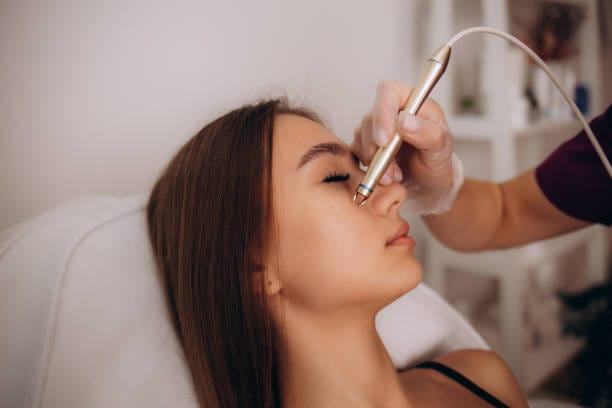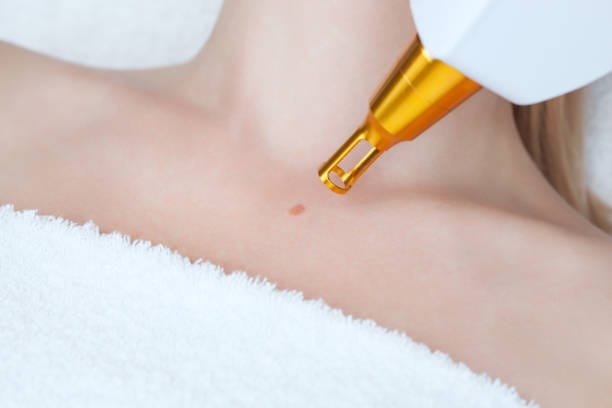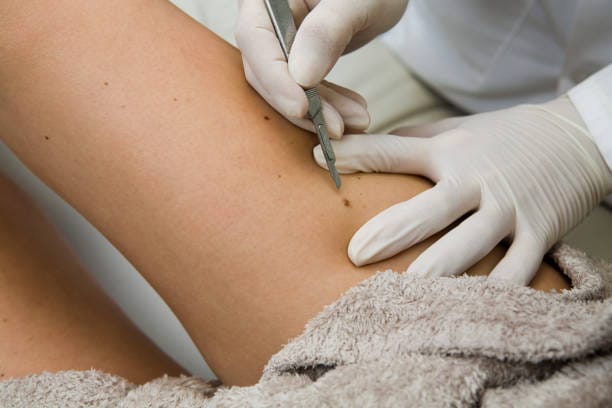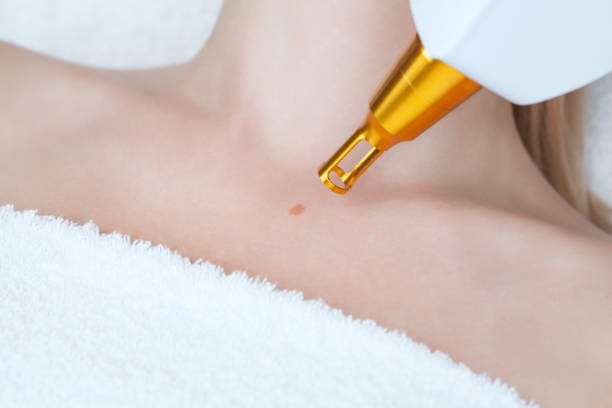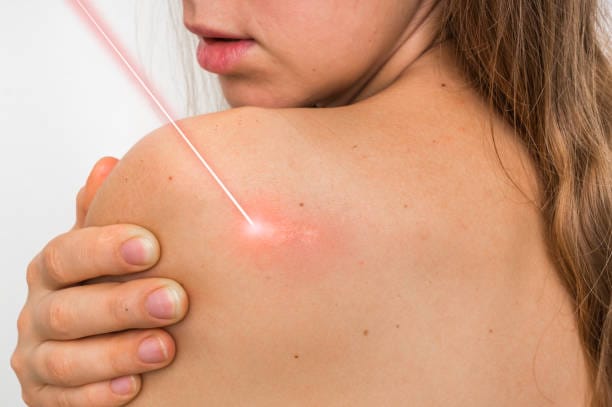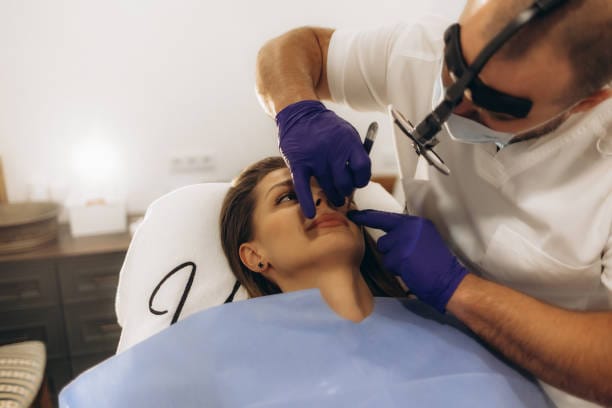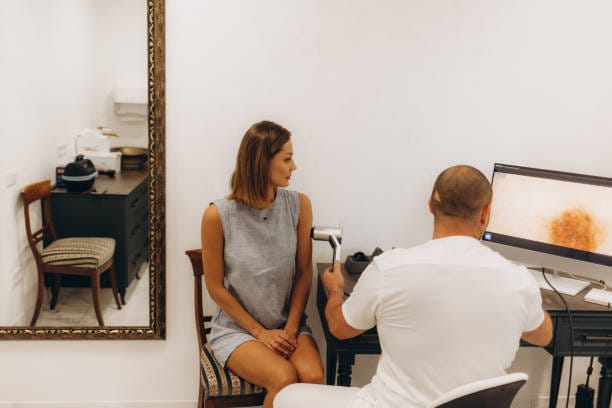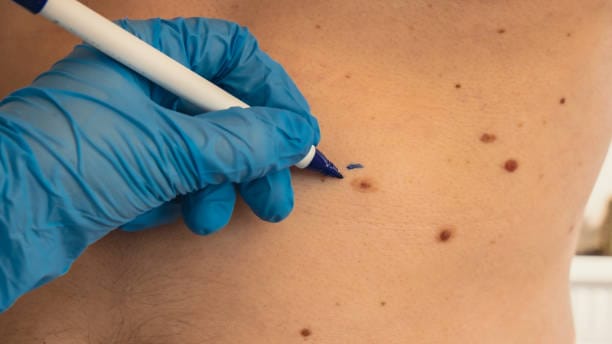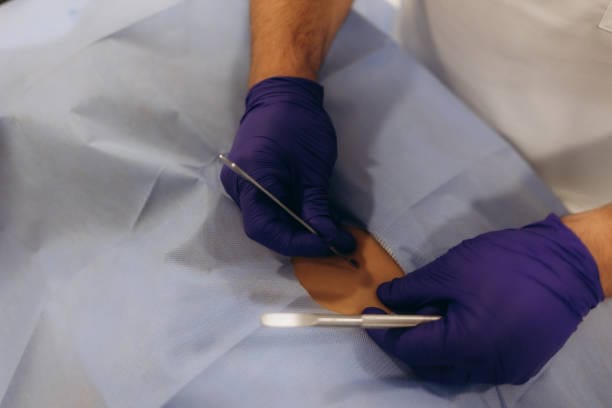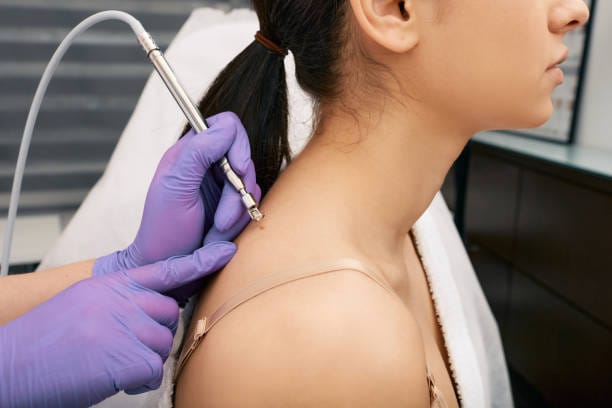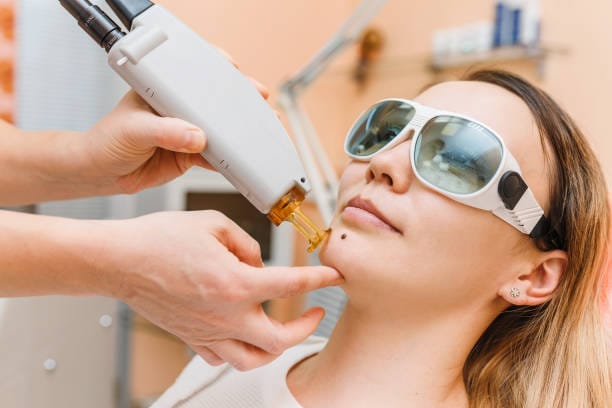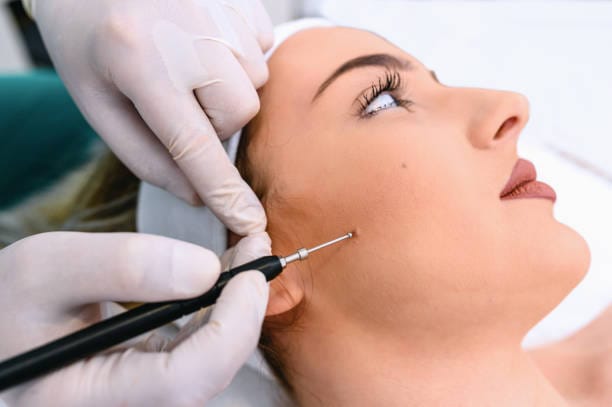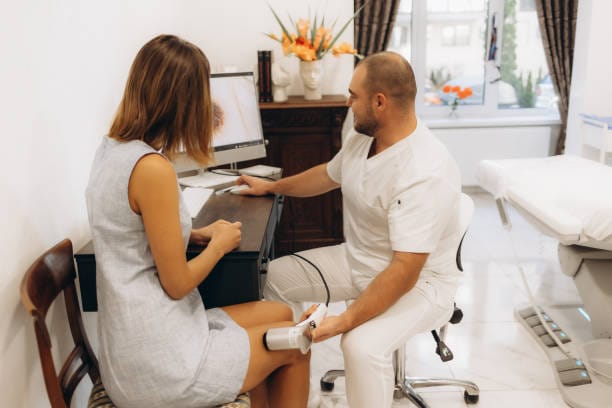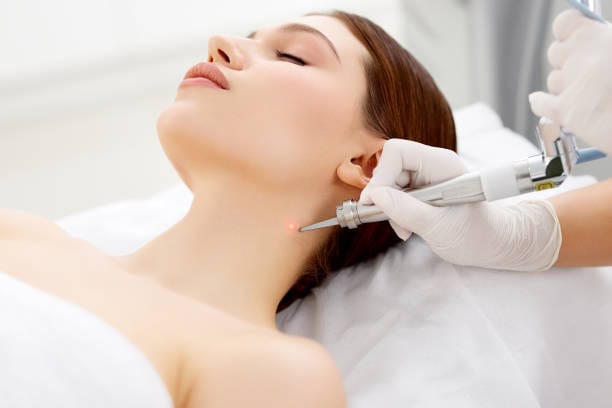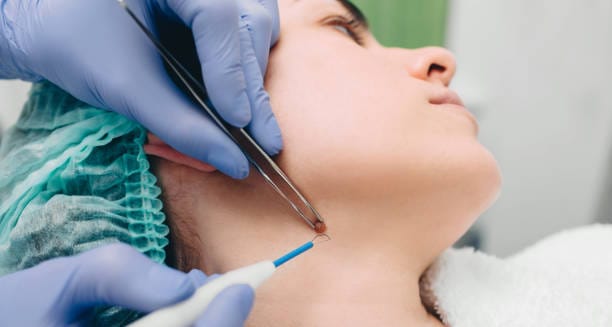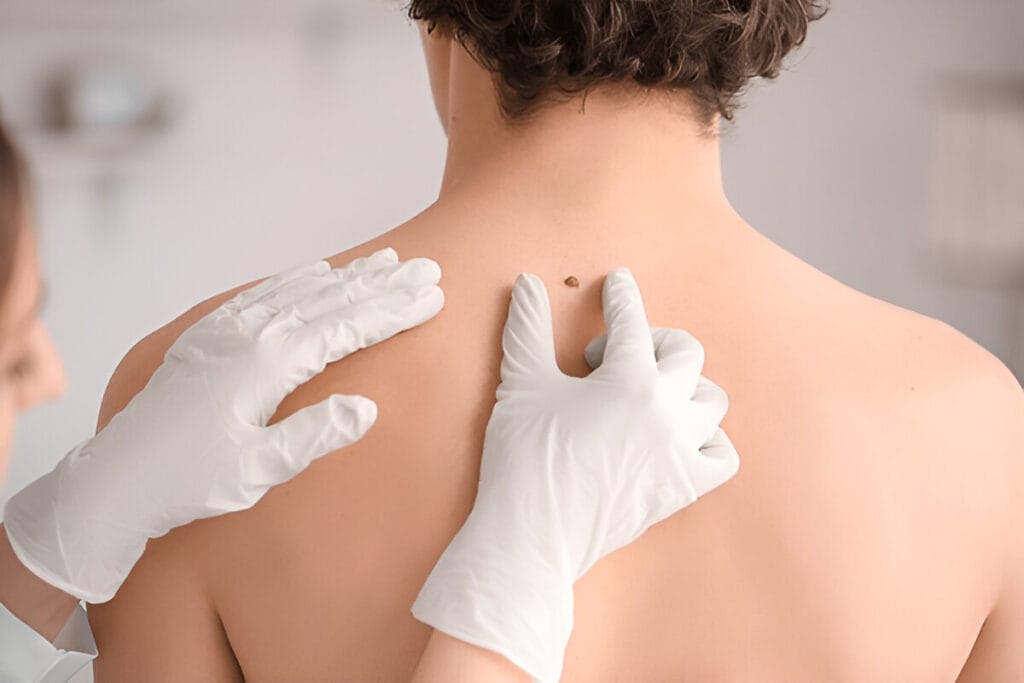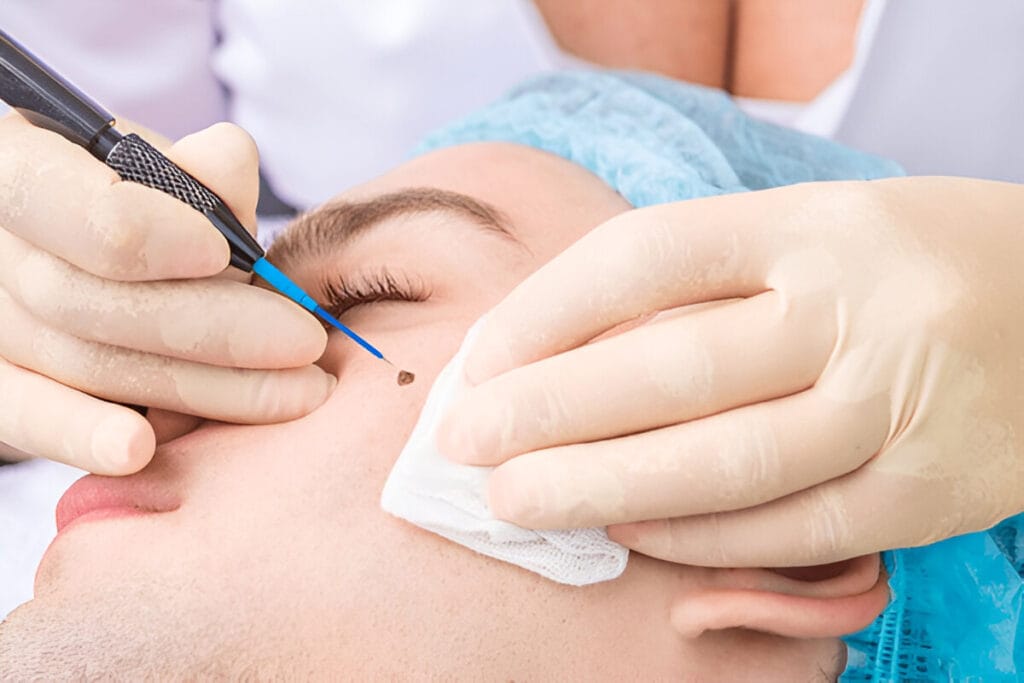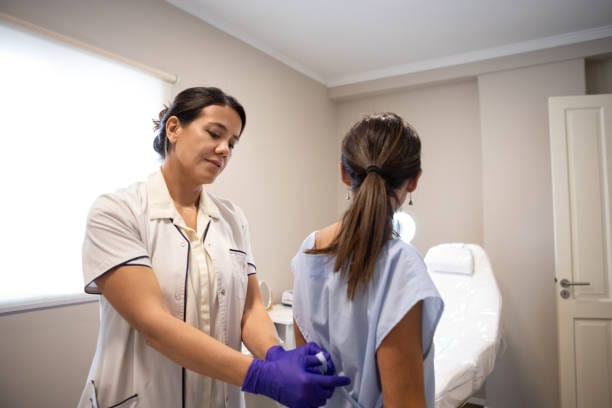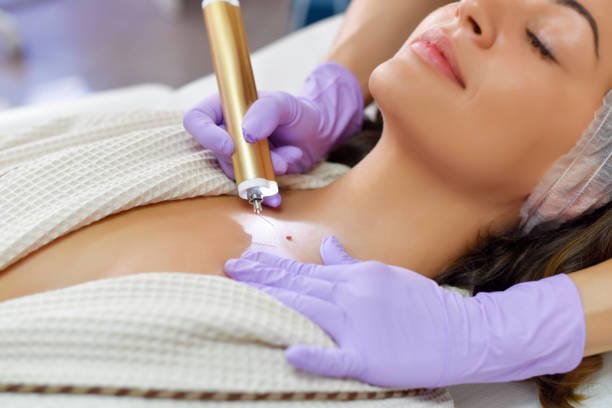Preventing New Moles After Mole Removal Treatment | Revitalise London
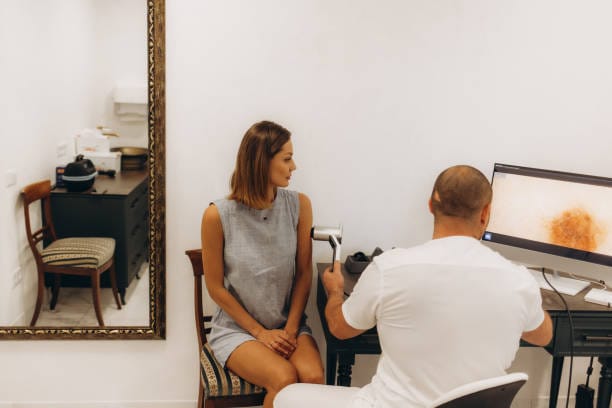
Mole removal is a standard cosmetic and medical procedure for achieving precise and evenly toned skin and how it helps in Preventing New Moles. However, there is another concern that new moles may appear after treatment, whether for aesthetic or health reasons. Mole removal eliminates existing moles but does not stop them from forming new ones.
Moles develop due to genetics, sun exposure, hormonal changes, and skin damage. Unless these factors are controlled, new moles may even appear after removal. That is why a proactive approach to preventing new moles is recommended. This approach includes sun protection, tailoring the skincare routine, and living healthy.
By understanding what sets the process off, you will take the right steps to protect your skin. Let's look into ways to stop the moles from reoccurring, from doing daily skin care to getting a few professional treatments.
Why Do New Moles Appear?
Understanding why this happens is essential for preventing new moles and maintaining clear skin.
Genetics and Skin Type
Your genes influence most mole forms. Those with mole-prone skin tend to have moles naturally, so they are vulnerable even after mole removal.
Sun Exposure and UV Radiation
One of the biggest triggers for developing new moles is the sun's ultraviolet (UV) radiation. Over time, sun exposure causes melanocytes, the skin pigment-producing cells, to respond, thus causing mole formation. Whether you remove an old mole or not, UV exposure leads to new ones developing elsewhere.
Hormonal Changes
Puberty, pregnancy, or menopause can cause new moles, as hormonal fluctuations produce these lumps and bumps. Hormones affect melanin production and, therefore, mole growth. Other things that may cause this process to occur include birth control pills and hormone therapy.
Skin Damage and Inflammation
Sometimes, skin trauma, including cuts, burns, and frequent irritation, can also cause moles to develop. The more inflammation, the more melanocytes you have, and the chances of new moles increasing, particularly in sensitive areas.
Ageing and Natural Skin Changes
Our skin undergoes specific changes along with us, including forming new moles. Depending on the skin, some moles fade independently, while others are caused by ageing, sun exposure, and genes.
Preventing new moles: Can You Preventing New Moles?
You have no power over genetics, but you can affect environmental factors such as sun exposure, skincare regime, and lifestyle. The next sections will discuss the best ways to prevent the creation of new moles and keep skin clean and healthy.
Sun Protection: The Key to Preventing New Moles
One of the top causes of new moles is sun exposure. Moles form when the skin cells that produce melanin (melanocytes) are activated by ultraviolet (UV) radiation. After mole removal, there are several things you can do to prevent new moles, and proper sun protection is essential if you want to do this

Why UV Exposure Causes Moles & How it Preventing New Moles
When skin faces the sun, it produces more melanin to shield itself from it. Existing moles may darken, and new ones may grow. During cloudy days, UV rays may penetrate the skin and cause the formation of moles.
Best Sun Protection Practices
The best steps you can take to avoid developing new moles are:
- Apply Broad-Spectrum Sunscreen: A sunscreen with an SPF of 30 or more that protects against UVA and UVB rays should be applied. It is best to use it daily, even indoors, as ultraviolet rays penetrate glass.
- You should regularly apply Sunscreen. If you're outdoors, sweating or swimming, you should reapply the sunscreen every two hours.
- Protective clothing: Long sleeves, a wide-brim hat, and sunglasses can protect the skin from UV rays.
- Don’t Let Peak Sun Hours: The sun is most powerful between 10 AM and 4 PM. If possible, stay in the shade or indoors during these hours.
- Use sunscreens containing zinc oxide or titanium dioxide if you have sensitive skin. These physical sunblocks provide a shield against UV rays.
Hidden Danger: Tanning Bed and Artificial UV Light
Most people believe indoor tanning is safer than the same amount of sun, but it’s a myth. Concentrated UV radiation surely comes out with every tanning bed use you make, and the risk of getting a mole or skin cancer is significantly increased. It is essential to avoid artificial tanning to prevent new moles completely.
The Power of Daily Sun Protection
Protecting your skin from the sun is one of the easiest and most effective ways to prevent new moles. However, pairing sun protection with a proper skincare regime strengthens the skin’s defences. The next section will cover how the correct skincare routine can help prevent mole formation.
Skincare Routine to Reduce Mole Formation
Preventing new moles after mole removal involves a set skincare routine. There is a way that proper skin care can protect your skin from damage, sun exposure, and inflammation all of which contribute to mole formation.
1. Use Antioxidant-Rich Skincare Products
Antioxidants can protect against free radical damage, and hence, excess production of melanin and the formation of moles can be prevented. Look for products that:
- Brightens skin and reduces pigmentation.
- Vitamin E – Protects against sun damage.
- Vitamin B3—Niacinamide (Niacin) helps regulate melanin production, so this tolerance booster should be included in your skincare routine.
- Soothes the skin and prevents sun-induced damage: Green tea extract.
2. Gentle Exfoliation for Clearer Skin
It helps exfoliate dead skin cells and enables new, healthy skin to grow. It can also avoid clogged pores, which can cause irritation and the formation of moles.
To keep skin smooth, use a sulfated mild exfoliating cleanser with AHAs (glycolic acid, vitamin A acid) or BHAs (salicylic acid), a gentler AHA, or OI (oxygenated ingredients, not soap).
Do not over-scrub or over-exfoliate, as that can disrupt the skin barrier, allowing melanocyte activity.
3. Keep Your Skin Hydrated
Get moisture, which restores normal skin barrier function, thrives in the presence of UV and acts as an irritant; this combination of factors promotes the formation of new moles.
Pick a lightweight, non-comedogenic moisturiser based on your skin type.
The skin's hyaluronic acid and ceramides help keep it hydrated without clogging pores.
4. Do Not Use Harsh Chemicals and Skin Irritating Things
Certain skincare products have harsh ingredients that could cause inflammation, leading to the formation of moles.
Skip products containing alcohol, sulfates and synthetics.
Choose a mild, dermatologist-recommended formula that promotes skin healing.
5. Daily Sun Protection Enhances Skincare
Due to this, even the most effective skincare regime will not be sufficient to prevent new moles if you cannot protect your skin from UV damage. Apply broad-spectrum sunscreen daily as your last step in the morning.
Healthy Skin Starts with the Right Care
However, following a proper skincare routine will help prevent existing moles from getting bigger and strengthen your skin barrier so that new moles will not form. Diet and lifestyle are also very important. In the next section, we'll examine how a healthy diet can assist in mole prevention.
Healthy Diet and Lifestyle for Mole Prevention
Mole formation is related to what you eat and how you care for your body. Providing the skin with enough nutrients and a healthy lifestyle helps reduce the risk of developing new moles, as it supports skin regeneration and protects it from UV damage.

1. Eat Foods Rich in Antioxidants
Antioxidants help to counteract free radicals, which are unstable molecules that can cause damage to the skin and cause the growth of moles. Other items to eat to keep your skin healthy include:
- Vitamin C boosts collagen and reduces pigmentation of oranges, strawberries, bell peppers, and bell peppers.
- Vitamin E (almonds, peanuts, spinach) – Protects sun damage.
- Carrots, sweet potatoes and kale – are rich in beta–carotene, a natural pigment which supports skin repair.
- Green tea and dark chocolate polyphenols (Prevent oxidative stress in the skin)
2. Stay Hydrated To Preventing New Moles
Drinking enough water allows the body to flush out toxins and keep the skin hydrated. Dehydration weakens the skin barrier, making it easy for it to be damaged and moles to form. Your aim should be to drink eight glasses of water a day.
3. Limit Sugar and Processed Foods for Preventing New Moles
Sugar and processed food give a high intake, which may lead to inflammation, which is well known to be the root cause of the formation of moles. For healthier skin, replace sucrose snacks with fruits, nuts, etc.
4. Maintain a Healthy Weight
Fast weight gain or loss can cause hormonal imbalances that affect melanin production and cause the appearance of new moles. To preserve hormone stability, try to eat a balanced diet and be consistently physically active.
5. Reduce Stress Levels
The actual reason for mole growth, as supported by scientific research, may be due to chronic stress that affects the hormonal balance in the body. Try:
- It reduces stress, and meditation or deep breathing exercises are also used.
- Exercise such as yoga, walking, or other activities.
- Sleep that’s of the highest quality for repairing and rejuvenating the skin.
A Complete Approach to Mole Prevention
Eating the right foods in certain circumstances can help maintain a healthy lifestyle and avoid new moles. However, professional treatments can further reduce mole formation if you seek more advanced solutions. The following section discusses the best dermatological treatment for mole prevention.
Professional Treatments to Preventing New Moles
Skincare and lifestyle changes help manage some new moles, but genetic predisposition or exposure to the sun can also cause them. In such cases, professional treatments can offer supplemental protection and decrease the risk of mole formation.
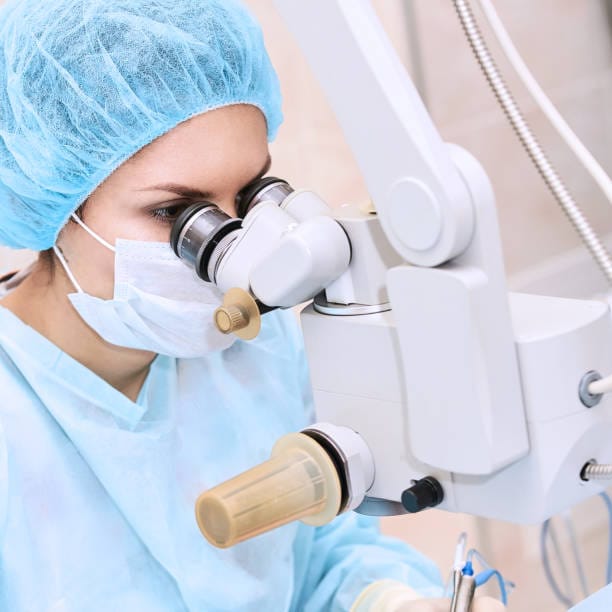
1. Chemical Peels for Skin Renewal Helps Preventing New Moles
Exfoliating acids in chemical peels are used to remove damaged skin layers in order to prevent mole formation by:
- Reducing pigmentation and sun damage.
- Encouraging new skin cell growth.
- Improving skin texture and tone.
Picking glycolic acid, salicylic acid, and trichloroacetic acid (TCA) peels is ideal for best results. On regular treatments, melasma, or any blemish, stays effectively treated.
2. Laser Skin Resurfacing for Mole Prevention
Laser treatments can be utilised for sun-damaged skin and pigmented cells, which prevent new mole formation from:
- Removing deeply embedded pigmentation.
- Stimulating collagen production for healthier skin.
- Minimisation of skin effects related to UV exposure.
These include CO2 and fractional laser treatments, which help regenerate and protect the skin over time.
3. Cryotherapy to Remove Early Mole Growth
Freezing or cryotherapy is the technique that removes (freezes) abnormal skin cells before they turn into full moles. This procedure works well for:
- New as the moles are forming and therefore smaller.
- Areas of the skin damaged by the sun.
- Preventing mole clusters from expanding.
4. Regular Skin Screenings and Mole Mapping Helps Preventing New Moles
Early detection is essential for preventing moles. It will also help your dermatologist examine your skin for any unusual growths.
- Track changes in existing moles.
- Look for areas that could become problem moles before they develop.
- They recommend preventing further development treatments.
How to Take The Extra Step: Preventing new moles
Professional treatments are available for those who are likely to develop equally frequent moles that, if untreated, can lead to skin damage.
The Importance of Self-Examination
In the case of mole removal, staying on top of any changes in your skin after is the first step in regular self-examination. Each month, look carefully at your skin to become familiar with its usual appearance.
Professional Skin Examinations
Therefore, apart from self-examinations, it’s necessary to have professional skin checks. A mole mapping or digital imaging can be performed by a dermatologist or a skin care specialist who can take a detailed look at your moles. It’s good that these professional assessments confirm what you already see and offer some professional insights into minor changes that perhaps none of us notice.
How To Avoid The Triggers That Can Cause New Moles
Understanding Environmental Triggers
Environmental triggers continuously affect our skin, leading to changes. Environmental pollutants, chemicals, or other toxins may be irritants that cause inflammation, which in turn causes melanocytes to produce more pigment. If you know your surroundings,you can take proactive measures, such as using barrier cream or cleansing your skin well afterwards.
Minimising Artificial UV Exposure Helps Preventing New Moles
Known to be a risk, natural sunlight is only one risk factor, as artificial sources of UV light are equally important. Concentrated doses of radiation delivered to taming beds and other artificial means of exposure to UV radiation can promote melanocyte activity, leading to new moles. It is crucial to protect yourself from these artificial sources. Instead, the emphasis is on responsible sun exposure by wearing protective clothing and using broad-spectrum sunscreen outdoors. You help limit natural and artificial UV exposure, which can further cause skin issues like more mole formation, while making your skin firmer and healthier over the years.
Medical Treatments That Help Preventing New Moles
Advanced Laser Treatments and Cryotherapy Help Preventing New Moles
Reducing mole-prone skin cells is one of the very modern options of laser therapy. This treatment works by shining concentrated light energy from a laser or intense pulsed light at areas where the pigmented cells are concentrated to decrease the odds of new moles developing in the treated areas. Moreover, small, emerging moles can be prevented through cryotherapy, which is a method of freezing off unwanted cells. These two procedures are minimally invasive and can do both types of skin, so the risk of recurrence is minimal, and the skin becomes smoother.
Chemical Peels and Microdermabrasion for Skin Renewal
Various ways of doing it, such as chemical peel and microdermabrasion, promote skin renewal. Chemical peel involves applying a specialised solution of chemicals to peel out the outer skin layers and reduce the pigmentation irregularities. Microdermabrasion too gently exfoliates the outside of the skin, encouraging new and healthier cells to grow. They stimulate the skin's natural process of regeneration and thus prevent the formation of new moles in time
Prescription Solutions and Retinoids
Other ways to protect against the development of new moles are prescription creams or retinoids for people at high risk of developing new moles. Retinoids increase the rate of cell turnover and prevent the accumulation of pigmented cells. Often, prescription solutions are created to help remedy spots caused by factors involved with mole formation, including features like inflammation and hyperpigmentation. These medical-grade products can be more effective than over-the-counter methods, especially if trying to relieve persistent skin issues.
Consulting a Skin Specialist for Personalized Care
Ultimately, a consultation with a skin specialist is key to determining the most effective treatment plan for preventing new moles. A professional can assess your skin’s condition and recommend a combination of treatments tailored to your unique needs, ensuring that you receive comprehensive care and ongoing monitoring for optimal skin health.
Why Choose Revitalize London for Skin Health
& Preventing New Moles
Expert Care and Cutting-Edge Technology For Preventing New Moles
Revitalise London boasts a team of highly skilled professionals who specialise in advanced mole removal treatments. With years of experience and access to the latest technologies, our clinic provides safe and effective procedures tailored to each individual’s skin needs. Our expert care ensures you receive the best treatment, minimising scarring and preventing new mole formation.
Personalised Treatment and Comprehensive Aftercare
At Revitalize London, we understand that every patient is unique. Our personalised approach means that your treatment plan is customised to your skin type, lifestyle, and mole removal history. We prioritise the removal process and offer comprehensive aftercare advice to support long-term skin health. Our dedicated team is committed to helping you maintain clear, healthy skin, ensuring you feel confident and cared for every step of the way.

